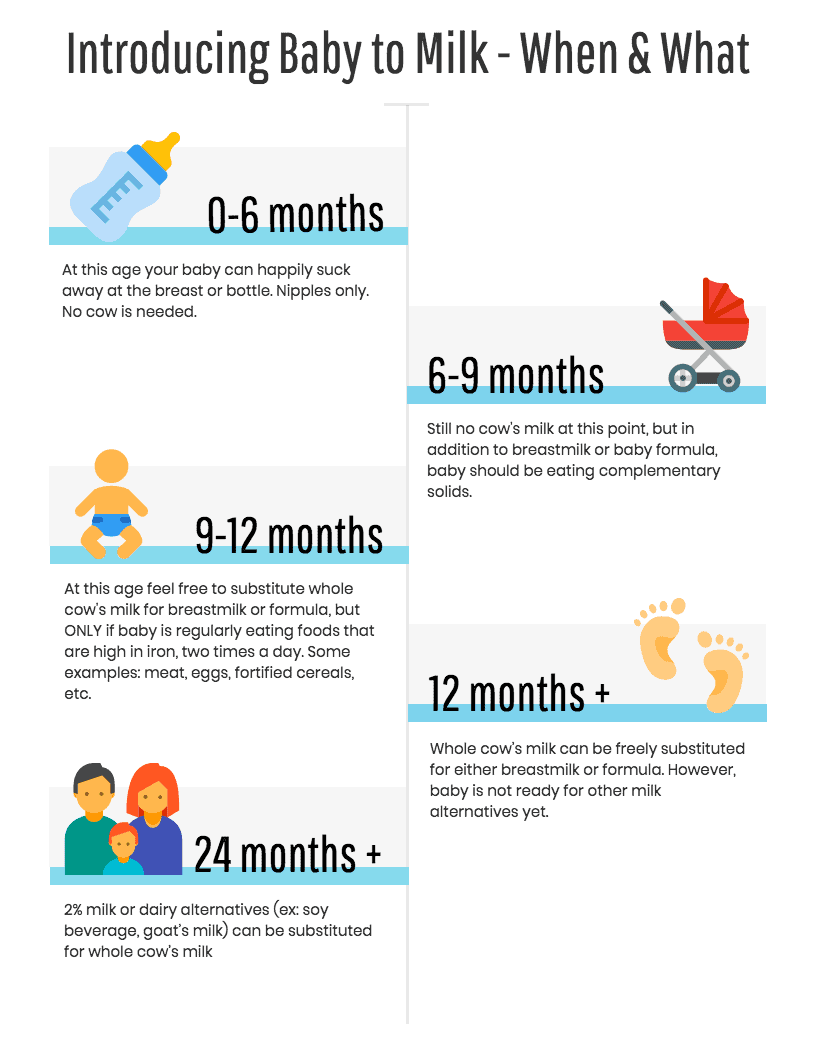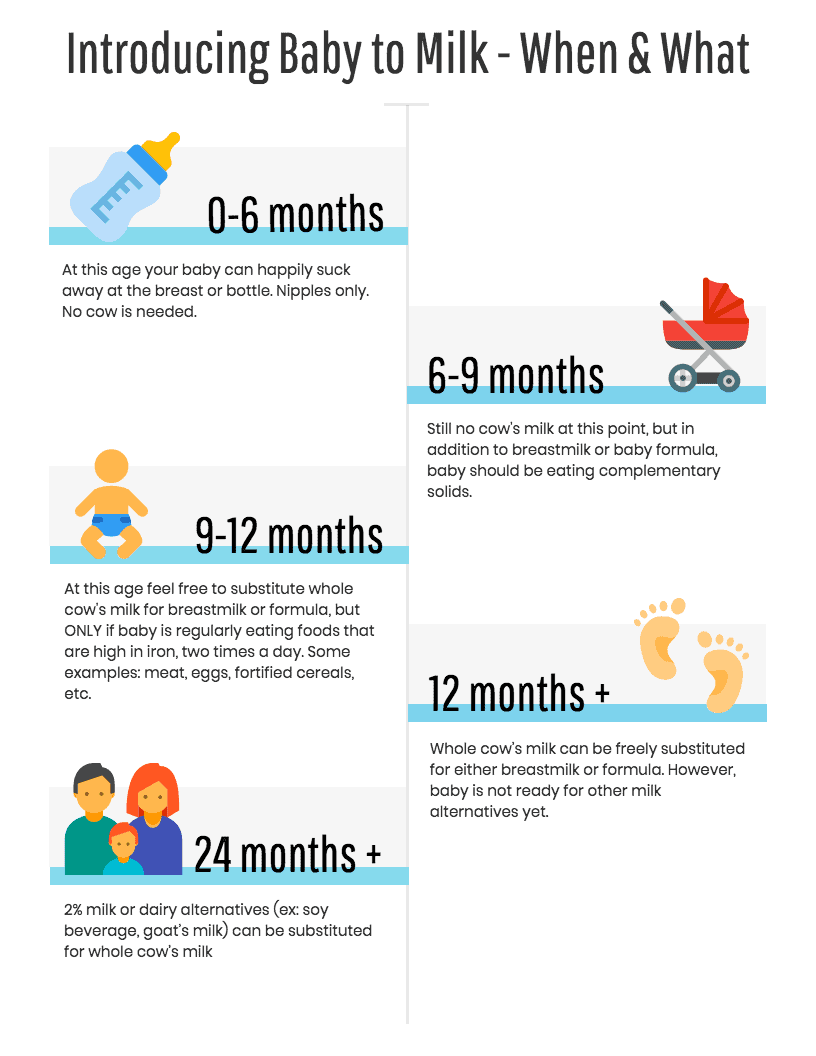When to Introduce Cow Milk to Baby

Contents:
- Child has Pain in Chest
- Causes of Chest Pain in Children
- The Difference Between Cow Milk and Breast Milk
How To Introduce Cow's Milk for Babies?
You’d better introduce cow milk in the diet of your baby after he/she turns 1 year old. Cow milk is a very good nutrient. The proteins that are contained in milk are better than those in meat and fish. Besides, they are digested faster. Protein is necessary for the organism of a human since it takes part in the building of new cells. Cow milk contains the following components: casein, albumen and globulin. All the proteins of cow milk refer to the group of complete proteins. It means that each of them contains 20 amino acids.
When Should You Introduce Cow Milk to Baby?
If you’re feeding your baby with a baby’s formula, you’d better start to gradually introduce cow milk into his/her diet starting from the time when your baby turns 9 and up to 12 months. However, if you can afford it, it’ll be better to continue feeding your baby with a baby’s formula right until the moment he/she turns 12 months old. If you want to provide your baby with rational nutrition, you’d better not give him/her cow milk up until he/she turns 1 year old.
It’s important to point out that if a baby drinks cow milk regularly, he/she is likely to have allergic reactions to the proteins. Besides, if a baby regularly drinks cow milk, it may result in dehydration. It is found that if a baby starts drinking cow milk too early, it may result in iron deficiency anemia.
Moreover, there’s an increased risk of getting ill with Diabetes, type 1 (The most severe type of diabetes). That’s why in case anyone of a baby’s parents has insulin-dependent diabetes, it’s better not to give the baby products that contain native (unspecialized) proteins of cow milk. To sum it up, the best product to give to your baby up until he/she turns 1 year old is his/her mother’s milk.
The Difference Between Cow Milk and Breast Milk

There is significant difference between cow and breast milk both in terms of quality and quantity of nutrients it contains. Cow milk doesn’t have the immunologic and trophic factors that breast milk has.
As for nutrients, cow milk contains more proteins and minerals (calcium, phosphorus, sodium, potassium, magnesium and chlorine) and less carbohydrates and essential fatty acids (linolenoic acid and a-linolenoic acid). Besides, cow milk contains less polyunsaturated fatty acids (long chain), iron, zinc, vitamin C and niacin.
Cow milk doesn’t only contain less protein in general, but its quality is also different from the quality of breast milk. Besides, the proteins of cow milk can cause allergic reactions on the part of a baby. Even though cow milk is considered to be a source of many nutrients necessary for babies, you’d better not start to give it to your baby up until he/she turns 1 year old.
The reasons for it are enlisted below:
- cow milk can fully replace breast milk;
- cow milk contains low amount of iron;
- cow milk can cause gastrointestinal bleeding, especially if a baby is less than 6 years old;
- cow milk contains a high amount of proteins and sodium. The amount of these elements in cow milk is 3-4 times higher than in breast milk.
How do you introduce cow milk in the diet of your baby:
- Don’t give cow milk to your baby up until he/she turns 1 year old. Feed your baby with either breast milk or a baby’s formula.
- Slummed milk is not recommended for babies.
- Those babies who are 1-2 years old can be fed with whole milk.
- Give skimmed milk to your baby only after he/she turns 2 years old.
- It’s allowed to give skimmed milk to babies who are 1.5-2 years old if they’ll drink it in large amounts (up to 1.5 liters per day).
- Babies from 1-2 years old should drink 0.7 liters of milk per day.
- You should know how to detect the first symptoms of allergic reactions caused by milk or milk and dairy products intolerance.